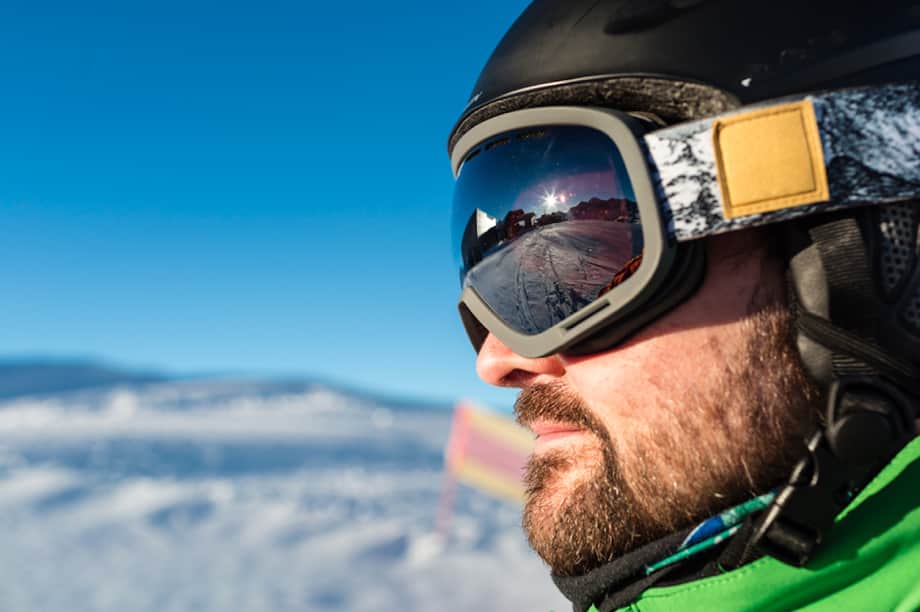
Snow Blindness is the condition we hear whispers of on the way down the mountain. It’s a painful, often temporary eye condition that certainly puts a dampener on a great snow season. Here’s what you need to know about the condition, and some vital snow blindness prevention tips.
Snow Blindness
Medically known as photokeratitis, it’s not always associated with snow, but is most common when riders are surrounded by white, reflective snow on the mountain. It essentially comprises a sunburned surface of the eye due to UV rays, and can cause temporary blindness and a harsh, burning sensation.
We all know that the sun produces UV rays, and do our best to avoid it by using suncream on the beach. But the same risk of burning exists for skiers too – on the mountain, where altitude increases the sun’s power. In fact, up to 80% of those rays will reflect right back at us off the snow.
Symptoms are known to worsen after the exposure to sunlight – just like sunburn does. They include a burning pain, the feeling of grit in the eyes, sensitivity to light, watering and red eyes, poor vision, swelling, headaches, and seeing halos around lights. The actual ‘blindness’ part is temporarily compromised sight which can make it hard to drive or continue to ski. It usually lasts up to 48 hours.
Treating Snow Blindness
Luckily, like sunburn, snow blindness usually goes away on its own. There are, however, a number of cures which can soothe the pain and make things easier.
- Remove any contact lenses, as they will only continue to irritate the eye until it has healed
- Stay indoors to avoid harsh sunlight
- Wear sunglasses until the symptoms have reduced
- Keep eyes moist with eyedrops (choose the sensitive ones)
- Take pain relief in safe doses
- Place a cool, damp cloth over closed eyes for a soothing sensation
Try to avoid touching or rubbing the eyes as it will only make the symptoms last longer. See a doctor if, after 48 hours, the symptoms persist. If they are worsening after 24 hours, that’s another reason to see an eye doctor.
Preventing Snow Blindness
Snow blindness prevention is a simple and easy way to avoid hours, sometimes day, of pain that keeps you off your skis or bored for a large chunk of your precious time.
Sunglasses are your go-to solution here. Make sure they’re well made, because they need to block 100% of the sun’s rays. You can choose photochromic lenses if you’re already a glasses wearer and don’t want to risk exposure to sunlight whilst swapping between normal and dark glasses.
Remember that even cloudy days cannot prevent the sun’s UV rays, so it’s best to stick to wearing sunnies throughout the season. Glacier glasses or wraparound styles are best for full coverage of the eyes.
Of course, during winter activities such as skiing, boarding and any other activities you’re doing on the mountain, a pair of good quality snow goggles are the best snow blindness prevention tool. Make sure they cover the sides of your eyes too, as UV rays can sneak in and cause damage from the sides. A good pair of goggles is an investment worth making in order to maximise your ski season.
Ask your optician to check your existing glasses if you’re unsure they will do the trick. It’s better to be safe than sorry, and most opticians will be happy to do this for free. Check the labels or reviews when you’re buying glasses and goggles and run a search for ‘snow blindness’ to find any anecdotes that could help inform your purchase.
Prevention is the way forward.
Don’t head out without your snow blindness prevention goggles or glasses – it may be refreshing to see the mountain in its true colours, but your eyes won’t thank you for it if the exposure lasts too long! Best of luck with your ski seasons and stay safe.